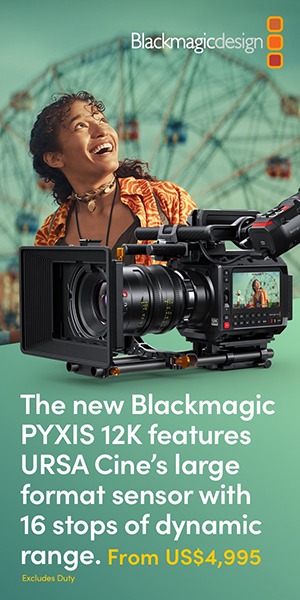
by Bo Brinck
A drum kit can be difficult to record or amplify because of its size and complexity. Typically, a drum set includes a wide range of instruments like kick (bass) drum, snare, overheads, toms, and hi-hats, with supplemental elements like chimes, wood block or cow bell often found as well.
Each of these individual elements has its own unique sound to capture, from within a close proximity. The complexity of this setup often creates crosstalk between each instrument, which can be beneficial or a huge challenge, depending on the end goal.
When miking the drum kit, the first consideration is what sound you’d like to capture: either the entire drum kit or each element separately. To capture the natural sound and dynamics of the full kit, choose only a few strategically placed microphones ― overhead, slightly behind or in front of the drums. This approach typically results in a sound that the drummer can recognize.
By contrast, several microphones are needed to close-mic each piece of a kit ― whether that’s drums, cymbals, or other percussive elements. This will result in a much different sound than the ambient approach, with the final result resting mostly in the hands of the engineer or producer.
To better understand how to mic a drum kit, it’s also important to consider the different types of instruments that are involved.

Kick Drum (aka bass drum)
Kick drums come in many sizes and sounds, but all have a batter head on the beater side. Most also have a resonator head on the opposite side, which helps the bass drum resonate at a specific tone and is often tuned very specifically to a preferred sonic character. The resonator head often has a hole, which makes it quicker and easier to place a microphone inside, which creates a very distinct sound with a lot of attack. By contrast, placing a microphone just in front of the hole typically results in good sound capture of both the batter and resonator and creates a more “boomy” sound. Some prefer a combination of the two approaches.
Angling the microphone outside the hole will alter the sound, sometimes resulting in a capture of only the desired attack or low-end. This can also reduce potential wind issues, since a lot of air is moved by the kick drum. Distance will impact the overall bass frequency response by taking advantage of the proximity effect. Ultimately, the placement, angle, and style of miking you choose all depend on the sound you wish to produce, as well as the instrument and drummer.


Snare Drum
Snares are the thin metal strings of the snare drum that are strung tightly across the resonator head on the bottom of the instrument and resonate when hitting the batter/top head―and are therefore an integral part of its sound characteristics. Capturing bottom snares separately can be beneficial for mixing, so a designated microphone is often used for this.
Years ago, microphones couldn’t capture both the extreme sound pressure levels (SPL) and the required high frequencies generated by a snare drum; you would have to prioritize one over the other. The workaround was to use two types of microphones placed at different distances to the batter head of the drum. One microphone on top of the snare―typically a dynamic microphone with low sensitivity that could handle the extreme SPLs―and another below the drum, where the sound pressure isn’t as extreme, using a microphone capable of handling high frequencies. While this combination was considered the best of both worlds, it also introduced phase issues between the mics. Today, these problems are solved with high-end condenser microphones that can simultaneously handle extreme SPLs and capture high frequencies.
Hi-hat
For instances when the style requires the hi-hat to be a distinct part of the drum mix, rather than naturally reproduced along with the full kit, it is recommended that a designated microphone is placed slightly above the hi-hat cymbal. The frequencies radiated from the hi-hat are higher towards the center and lower as the mic is placed closer to the edge. Since the microphone is pointing at a reflective surface, you will hear a lot of spill from the rest of the drum kit; a good trick to alleviate this is to face the hi-hat mic away from the snare drum. It’s always good to experiment with the angle of the microphone to find the best position and sound pickup for your specific setup.
Toms (aka rack toms)
Toms can be miked the same way as the snare. However, toms do not have snares underneath, so capturing the resonator head has a different purpose. Pointing the microphone closer to the rim creates a higher pitch attack while pointing it towards the center of the drum will generate a low-end, boomy sound that is more level.
Toms have different roles depending on the style played, so some considerations and genre aesthetics must be considered. In some cases, it is common to use accurately placed overheads rather than a specified tom mic. Other times, such as with pop and rock, the toms require a closer miking technique for a very isolated signal to process. As with the other percussion instruments, experiment with different positions and angles to find the desired sound and minimize the bleed from the cymbals, which are often very close to the mics on the toms.
Complete Drum Kit
Overhead microphones are often used on drum kits and excel in several situations—either as the main pair capturing the drum kit sound or as a complement to a close mic on the cymbals. Depending on the number of cymbals and the size/width of the drum kit, more than one mic might be needed. A stereo pair is often used, and several stereo techniques are useful.
Some people prefer to use an “underhead” miking technique, in which the mics are placed on a mic stand, or attached directly to the cymbal stand, with the microphone pointing upward towards the underside of the cymbals. This technique allows the instrument to be treated more individually and is sometimes preferred for practical and visual reasons.
A/B stereo is another popular technique that can be applied with omnidirectional or directional microphones. Wide cardioid microphones can be placed closer to the drums to capture a large area of the kit, whereas cardioid or even supercardioid mics will be more focused and pick up smaller areas. When placing multiple microphones overhead, the best practice is to maintain an equivalent distance between each mic and the snare. This will guarantee that the level, time, and phase of the snare drum is the same in both overhead mics. The snare drum is often the loudest and the most dominant sound of the kit, so it is best to use the instrument as the central point for overhead miking.
Only as Good as Your Surroundings
No matter what you are looking to achieve, the environment―whether on a live stage or in the recording studio―will have a major impact on the sound, which have a further influence on the miking technique that is deployed.

Bo Brinck is the Global Sales Support Manager at DPA Microphones. He has been working with microphones and audio technology for 45 years – 17 of them at DPA – educating audio engineers around the globe with miking techniques and providing them with valuable audio tips and tricks.






